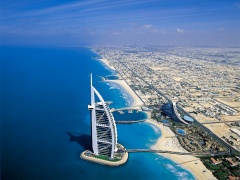
Liquidity and liquidity and liquidity — this is the main law of attraction for any asset among investors. And Dubai property seems to be quite all right with that. According to the Bayut portal, apartment rental yields in Dubai reach 8-10% pa on average, depending on location, and the capital appreciation for luxury real estate units looks even more promising: from 20 to 30% p a for apartments, and about 15% p a for villas.
The average rental income in Dubai is one of the world’s highest all analytical agencies never stop telling about. China, India, Saudi Arabia — these are three main investor countries in Dubai. China alone increased its investments in local economy by as much as 300% to AED1.3 billion of investments in 2014. And last year investors from 150 different countries invested AED 135 billion in the emirate’s real estate. But this is only one of attraction laws.
Knight Frank adds that stability, Dubai authorities’ commitment to their intentions to implement large-scale urban infrastructure projects up to 2020, together with the market supply control is a formula for success for the Dubai real estate market in the coming years.
In making the city attractive, not only for investors, but also for tourists Dubai Municipality is gearing up with such infrastructure projects as Dubai Metro Route 2020 and expanding Dubai Parks & Resorts.
As for the third law, controlled supply, it seems, the developers managed to agree and reach general consensus, thus limited supply will help stabilize prices, as already been confirmed by a recent report from ValuStrat. May 2016 ValuStrat Price Index (VPI) hasn’t recorded any price growth in Dubai 26 areas yet, but prices at least won’t go down, it said. House prices are holding steady at the same level and, probably, will rise towards the end of 2016, according to ValuStrat.
"This marks a continuation of evidence of price stabilisation," the report said.






